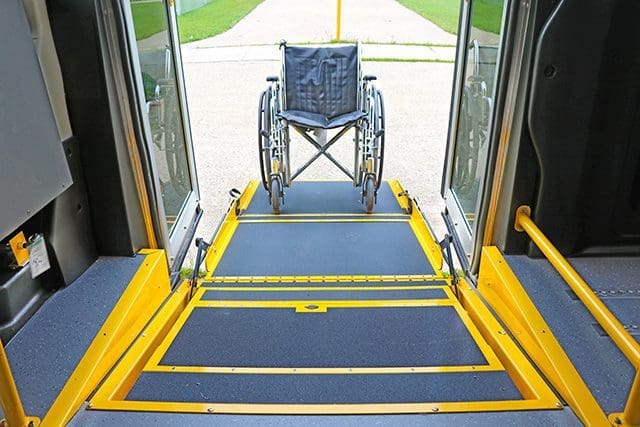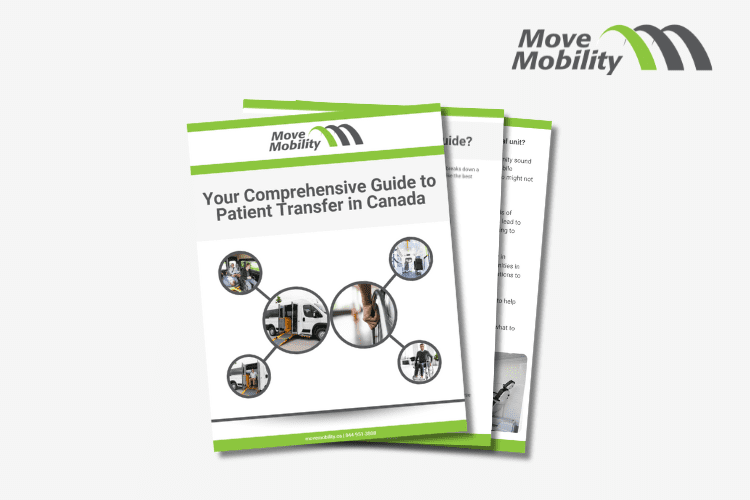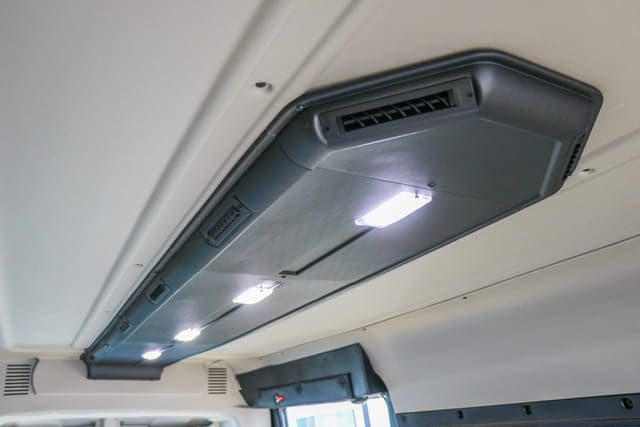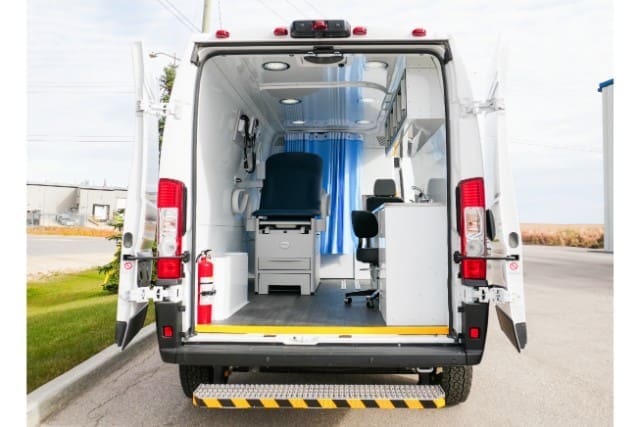Is your organization trying to decide between a manual ramp and a powered ramp for your wheelchair van? Many teams all across Canada face this same choice and start feeling bogged down by it.
Each type of ramp has its pros and cons, and making the wrong call can lead to having a ramp that doesn’t truly fit your organization’s needs. That gap between your current setup and what your team truly needs can slow things down and hold back your mission.
At this point, you’re probably asking:
- What’s easier to use?
- What’s better for our staff or clients?
- What will hold up over time?
These are big questions. Picking the right ramp can make operations safer, smoother, and less stressful for everyone.
At MoveMobility, we’ve spent over 20 years helping organizations like yours and Loft across Canada find wheelchair vans that match their goals. Some need manual ramps. Others go with powered. We listen first, then build based on your needs.
Our vans are made to reduce barriers in transportation and care, so your team can focus on making a difference. And while we believe in what we build, we know we’re not the only ones doing this work. We’re here to help you make an informed choice.
After reading this article, you’ll know:
- What a manual ramp is
- Why some organizations prefer it over a powered ramp
- What to consider when choosing your ramp
Let’s get into it.
What is a manual ramp for a wheelchair van?
A manual ramp is a solid, foldable surface that helps people in wheelchairs get in and out of a van. It has a hinge in the middle so it can fold up when not in use. When the van doors are closed, the ramp is stowed and doesn’t block the entryway.
To use it, you open the van doors, unfold the ramp, and guide it down. Most ramps have a built-in shock system, so lifting and lowering them feels smooth and easy. You don’t need to be super strong to use one.
Here’s how one of your clients might use a manual ramp:
- Power wheelchair: Your passenger can ride up and down on their own.
- Manual wheelchair: You’ll guide them up or down the ramp.
- Walker user: They can walk up or down at their own pace.
Manual ramps are used in wheelchair vans across Canada and are built to be safe and easy to handle. They’re a good fit for many types of riders and support teams. These ramps keep things simple without needing extra buttons or controls.
10 practical reasons for choosing manual ramps in vans
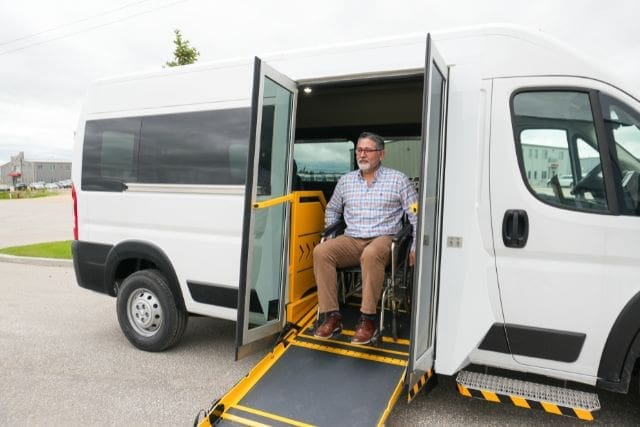
Picking between a manual ramp and a powered ramp depends on your organization’s needs. Both have good reasons behind them. Let’s take a look at why some prefer manual wheelchair ramps in their vans.
1. Manual ramps are simple to use
Manual ramps fold and unfold by hand. There’s no motor, no wires, and no switches. They work with just a little help from the person operating them.
That means:
- Less to break: No electrical parts means fewer chances of something going wrong.
- Always ready: It works even if the battery dies or the power system fails.
- Good for any weather: Rain, snow, or ice won’t stop it from working.
2. Manual ramps are cost-effective
Many organizations watch their budgets closely. A manual ramp can be easier on the wallet.
Cost-friendly perks:
- Lower upfront price: Manual ramps cost less than other options.
- Fewer repairs: No motors or controls to maintain.
- Cheaper service: It’s usually a less complicated fix if something goes wrong.
3. Manual ramps aren’t heavy
Manual ramps are fairly light and easy to operate for wheelchair van drivers. That can make a big difference in fuel use and daily driving.
Benefits of a lighter van:
- Better gas mileage: Less weight means the van uses less fuel.
- Easier on the van: Lighter ramps put less strain on the vehicle’s parts.
4. Manual ramps deploy quickly
With practice, unfolding a manual ramp takes a few seconds. There’s no need to wait for the system to power on.
Quick-use benefits:
- Saves time on short trips: Great for programs with fast and frequent stops.
- Easy to use in emergencies: You can deploy it immediately.
- No power delay: You don’t have to wait for electronics to catch up. This may be more common with the older wheelchair van powered ramp systems.
5. Manual ramps are easy to train on
Some teams have many staff members, while others are run by just one or two people. Manual ramps are straightforward to learn.
Simple training perks:
- New drivers learn fast: No tech experience needed.
- Fewer errors: It’s harder to make mistakes with a hands-on ramp.
- Great for volunteers: Even helpers with no van experience can pitch in and use manual ramps.
6. Manual ramps work well in cold weather
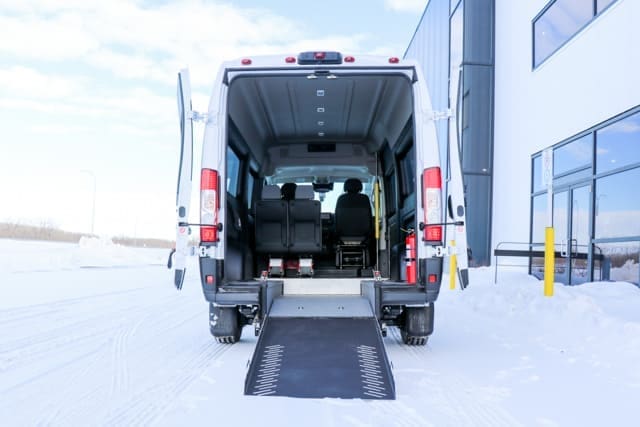
Winters are harsh in many parts of Canada. Cities like Winnipeg can get extremely cold.
Why manual ramps make sense in cold climates:
- No electronics to freeze up: Manual ramps don’t rely on power or motors.
- Less chance of breakdown: They stay reliable even in snow and ice.
- Easy to use in all seasons: From -30°C to +30°C, they get the job done.
7. Manual ramps are quiet
Some organizations want a quiet loading experience. Hydraulic lifts and motors can often make a little more noise.
With manual ramps:
- No engine sound: Just unfold it and go.
- Better for calm environments: Great for hospitals, care homes, or quiet neighborhoods.
- Helps reduce stress: Some riders feel more at ease without loud equipment.
8. Manual ramps work for heavy-duty needs
Some passengers use bariatric wheelchairs or need to be moved on stretchers. A strong manual ramp can support these needs.
At MoveMobility:
- Our manual bi-fold ramp is 36″ wide and 112″ long. It can support up to 600 lbs.
- That’s wide and long enough for large wheelchairs or stretchers.
9. Some manual ramps swing and fold
Some vans use a swing-and-fold ramp, which folds up when not in use but swings out of the way when needed.
Why does this help?
- Clear rear access: Perfect for loading stretchers or large chairs from the back.
- Better workflow: Staff can move quickly without extra steps.
- Popular in medical transport: It’s a favourite for non-emergency patient transfers.
10. Manual ramps require little maintenance
Another big advantage of manual ramps is that they require very little maintenance. Since they don’t rely on complex electrical systems or motors, they’re generally easy to maintain.
Why this matters:
- Manual ramps tend to have long lifespans because they have fewer parts to repair or replace.
- Fewer breakdowns mean less time spent in the shop and more time in operation, keeping your services running smoothly.
What should you consider when choosing your wheelchair van ramp?
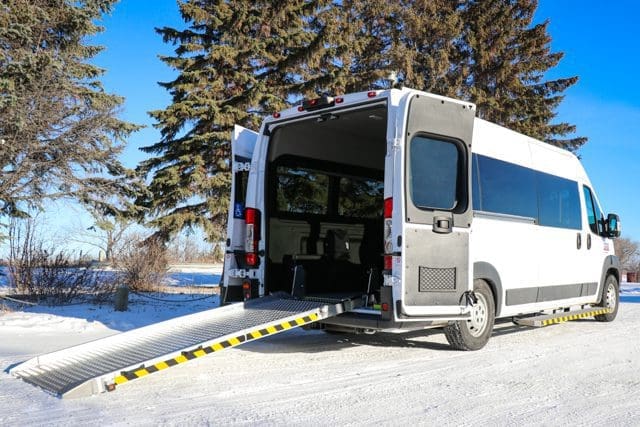
When it comes to choosing a manual ramp or a powered ramp for your wheelchair van, there are several important factors to think about. Each type of ramp has its benefits, and what works best depends on your specific needs and preferences.
1. How often will the ramp be used?
If your wheelchair van is in frequent use, especially for transporting passengers multiple times a day, a powered ramp might be a better fit. It can be quick and effortless, requiring no physical strength to deploy or stow away. On the other hand, a manual ramp could be more suitable for less frequent use, as it can be deployed with minimal effort, especially when it’s shock-assisted.
2. What is your budget?
Manual ramps tend to be more budget-friendly upfront, which can be an important factor for organizations on a tighter budget. While powered ramps have their advantages, they come at a higher initial cost due to the motorized features and wiring.
3. Climate and weather conditions
In areas with extreme cold weather, like those in northern Canada where temperatures can drop significantly, manual ramps might be a more practical choice. They are less likely to break down in freezing conditions compared to powered ramps, which rely on electric systems that can be sensitive to extreme temperatures.
4. Passenger independence
Consider how much independence your passengers need when using the ramp. With a manual ramp, passengers using power wheelchairs or scooters may be able to independently access the van if they have the strength to navigate the ramp. However, powered ramps can be a great option for those who may need assistance or have limited mobility, as the automatic function allows for easy, hands-off deployment and use.
5. Maintenance and reliability
Consider the maintenance required for each option. While powered ramps may require a little more upkeep due to electrical components, manual ramps have fewer moving parts and may be more reliable over time.
Choosing the right ramp depends on your organization’s unique needs, but carefully considering these factors can help you make an informed decision.
What wheelchair vans at MoveMobility come with the manual bi-fold ramp?
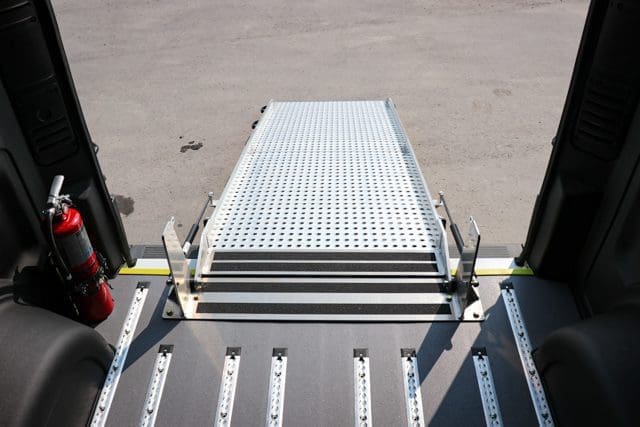
Here’s a breakdown of the manual bi-fold ramp options available on our wheelchair vans. These models are designed to provide safe, efficient, and easy access for both wheelchair users and ambulatory passengers, all while ensuring your organization’s needs are met.
| Van model | Ramp type | Key features | Best for |
| TR Classic (Ford Transit) | Manual Bi-Fold Rear Ramp |
|
Ideal for programs that require versatile transportation, like adult day programs, transit services, or medical fleets |
| PR Classic (Ram Promaster) | Manual Bi-Fold Rear Ramp |
|
Perfect for organizations needing a flexible, high-clearance vehicle that handles well in winter climates |
Got any questions about manual wheelchair van ramps?
You’re likely here because you need help deciding on the best ramp for your wheelchair van. Choosing the right ramp for your needs can make a big difference, whether you’re managing a transit program or looking for a better way to transport passengers.
Here’s what you learned:
- Manual ramps are affordable, low-maintenance, and reliable in all kinds of weather.
- They work well for heavy wheelchairs, bariatric needs, and are quieter than powered ramps.
- The choice between manual and powered ramps depends on your budget, the needs of your passengers, and where you operate.
Our team at MoveMobility has been manufacturing wheelchair accessible vans for years. We prioritize quality, safety, and ease of use in mind, so you can trust us to provide the best transportation solutions. Our goal is to make mobility easier for everyone.
We take pride in our work and the difference we make in communities like yours. If you have questions or need more guidance, click below to talk to one of our mobility experts.
Not ready to chat yet? That’s okay! We’ve got plenty of other resources to help you find the perfect wheelchair van for your needs.
Start by checking out our article on powered wheelchair van ramps.
After that, watch the video below that compares ramps and lifts. This will help you understand which option might work better for your team and clients.


